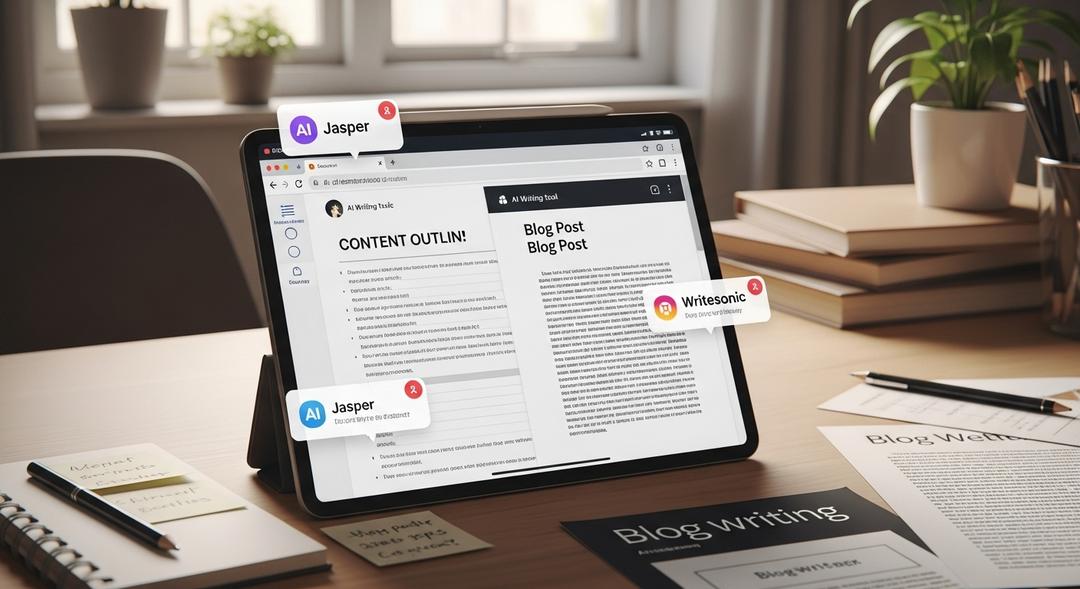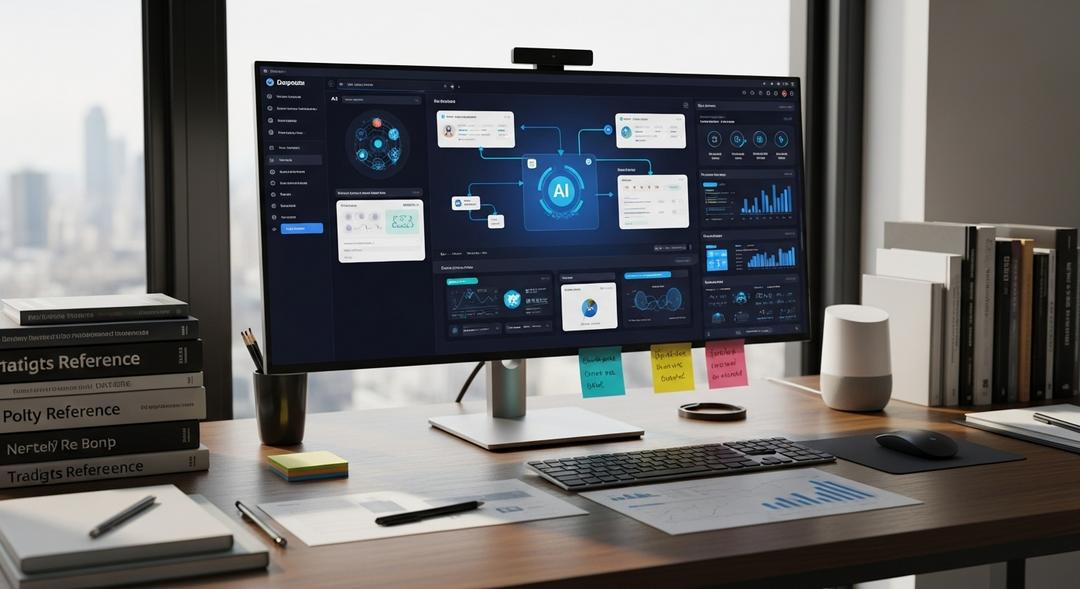Plagiarism detection is increasingly important for educators, writers, and organizations as digital content spreads rapidly, making it harder to guarantee originality.
Today, advanced tools designed to support AI education assistant tools allow users to scan and verify content more efficiently than ever before. These solutions help maintain academic integrity and protect intellectual property by quickly detecting duplicated material.
In the following review, you will discover a comprehensive overview of some of the top plagiarism checkers in use today. The breakdown includes their standout features, major advantages, challenges, and pricing details, creating a valuable reference for anyone serious about reliable tools.
What are the benefits for using AI tools to detect plagiarism
Using AI-based plagiarism detection systems delivers a number of important advantages in professional and academic environments.
- Rapidly scan lengthy content and immediately spot copied phrases or sections, saving hours of manual review.
- Offer precision in identifying both exact matches and subtle similarities, bringing dependable plagiarism prevention.
- Support fairness and uphold authenticity by ensuring all material meets originality standards required by schools, companies, and creative groups.
1. Detecting-ai.com
Features
- Analyzes text for machine-generated elements and plagiarism in one streamlined session.
- Instant scan results with clear visual signal of questionable segments.
- Simple web platform enables quick uploads and text entries for checking.
- Highlights unoriginal or suspicious content to help users address issues efficiently.
Pros
- Highly accessible, easy for both beginners and experts to utilize.
- Detects both machine-created and obviously copied areas in documents.
- Requires no installation, delivering cloud convenience.
- In-depth scan details help users make well-informed choices about their content.
Cons
- Certain higher-level options may only be open to paying subscribers.
- Lacks an offline solution as it runs solely on the web.
Pricing: Both complimentary and paid scan plans are offered, with premium options expanding limits and enhancing capabilities.
2. Originality.AI
Features
- Examines writing for both standard plagiarism and text likely produced by large language models.
- Bulk file scanning is available for teams and content agencies.
- Comprehensive records of all scans performed, with exportable reports.
- Convenient browser extension for checking content seamlessly.
Pros
- Delivers high accuracy in spotting copied and computer-generated writing.
- Includes team workflow tools for collaborative review and management.
- Batch analysis capabilities help publishers and editors save time.
- Clear, organized scan summaries simplify communication with stakeholders.
Cons
- Operates on a credit basis, so frequent use may increase overall costs.
- Some features require a learning period, especially for new team members.
Pricing: A per-word pricing structure applies, with options available for larger scale or team-based accounts.
3. Copyleaks
Features
- Detects plagiarism across numerous languages and file types through sophisticated algorithms.
- Designed for integration with other platforms via a full API.
- Measures content similarity for detailed side-by-side comparisons.
- Delivers results for both computer-generated material and direct plagiarism.
Pros
- Accepts many formats, including PDFs, DOCX files, and others.
- API provides flexibility for businesses and software teams to automate processes.
- Language agnostic, ideal for multi-national organizations or publications.
- Source-based reports identify where matches originate for greater transparency.
Cons
- Some tools and advanced customizations are exclusive to premium plans.
- Feature-rich design may initially be complex for new users.
- Frequent scans can become costly under a credit-based payment model.
Pricing: Copyleaks comes with a free trial; thereafter, billing is either monthly or pay-as-you-go, based on usage.
4. GPTZero
Features
- Specialized for detecting passages generated by modern text generation software.
- Provides clear detection scores and highlights lines suspected of artificial creation.
- Accessible with no registration needed for basic scans.
- Custom plans are available for institutions and educational settings.
Pros
- Effortless operation, makes text verification quick and simple.
- No cost for immediate checking, making it perfect for classrooms and assignments.
- Promotes honesty in academic assessments by flagging non-original work.
Cons
- Limited when assessing complex plagiarism outside computer-generated material.
- Fewer advanced features for large-scale corporate users.
Pricing: Free service for light users, with advanced and institutional plans on offer.
5. ZeroGPT
Features
- Matches text to both computer-generated writing and previously published sources.
- Works in numerous languages, allowing broad international access.
- No mandatory sign-up, making tools instantly available.
- Bulk scanning accessible to those with paid subscriptions.
Pros
- Cloud-based, working effortlessly across devices and platforms.
- Quick scans offer results in real time, minimizing delays.
- Displays transparent data breakdowns for easy validation.
Cons
- Accuracy can fluctuate with highly complex or niche subject matter.
- Advertising may appear during use by free account holders.
Pricing: Complimentary introductory scans, with premium levels tailored to heavy usage.
6. Plagium
Features
- Straightforward plagiarism and text comparison checks in one workspace.
- Connected Google Drive access simplifies document uploads.
- Varied analysis intensities give users flexibility depending on depth required.
- Optimized for teamwork with shared workflow features.
Pros
- Effective scanning speed, no matter document size.
- Flexible pricing based on scan detail and word count.
- Easy connection with popular cloud storage for managed review.
Cons
- The basic version limits available options.
- Can miss clever or subtle paraphrasing.
Pricing: Charges per scan or as a subscription, which adjusts to document and search settings.
7. Grammarly
Features
- Integrates plagiarism detection with grammar, style, and spelling suggestions.
- Available through browser and desktop applications for accessibility.
- Searches billions of indexed sites to highlight matching phrases.
- Offers instant feedback for improving content’s clarity and originality.
Pros
- Blends proofreading with quality content validation in one solution.
- Easy-to-use dashboard provides actionable advice at any skill level.
- Functions smoothly across operating systems and digital environments.
- Provides clear recommendations for corrections and learning purposes.
Cons
- Originality checks are reserved for Premium subscribers.
- May occasionally flag common phrases unnecessarily.
Pricing: Basic version is free, while enhanced plagiarism and grammar tools are offered in Premium.
8. Scribbr
Features
- Focuses on academia, scanning extensive journal and publication libraries.
- Delivers similarity percentages and full match sources for thorough review.
- Integrated citation and proofreading options improve academic writing.
- Comes with how-to resources for students and researchers.
Pros
- Perfect for students, theses, and scholarly writers needing comprehensive checks.
- Supports accurate citations with user-friendly guidelines.
- Accesses research from around the globe for deep comparisons.
- Reports present details clearly, even for those new to plagiarism checks.
Cons
- Per-document fees may deter frequent users with many projects.
- No continuous monthly subscription; pay as you go per report.
Pricing: Charges differ according to document size, each scan priced separately.
9. ContentDetector.ai
Features
- Combines plagiarism scanning with computer-generated content detection.
- Fast results and instant feedback for all types of written work.
- Covers everything from news and academic articles to website pages.
- Customizable downloadable reports are available for all users.
Pros
- Immediate answers make it useful for urgent content checking needs.
- Simple layout means no training required for new users.
- Accessible fully online without installation or hardware needs.
Cons
- Customization options fall short for advanced or enterprise deployments.
- Accuracy may vary when analyzing heavily paraphrased text.
Pricing: Free scans on basic plans, with premium accounts raising scan limits and adding deeper analysis.
Conclusion
As reliance on digital resources grows, so does the importance of protecting content originality. From independent businesses to academic institutions, quality plagiarism detection is essential for upholding standards and trust.
Platforms specializing in AI research tools and plagiarism checks empower users across the educational spectrum. With options offering batch processing, academic research access, and specialized computer-generated text detection, every user can find a suitable option.
When deciding on which checker to use, weigh factors such as pricing, platform compatibility, accuracy, and ease of use. Trying several tools will help you find the best match for your needs and ensure your content stays authentic and credible at every stage.








